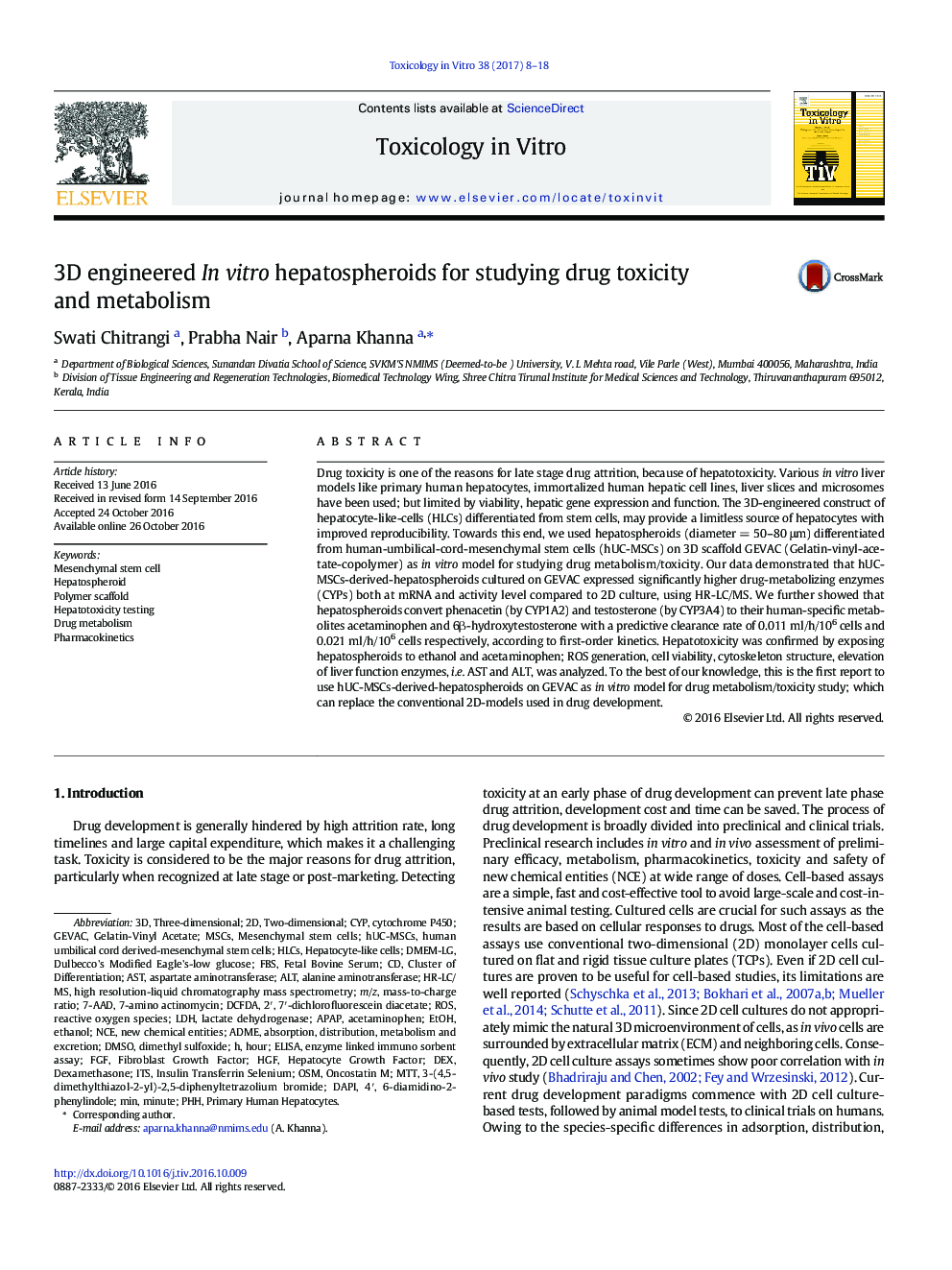| کد مقاله | کد نشریه | سال انتشار | مقاله انگلیسی | نسخه تمام متن |
|---|---|---|---|---|
| 5562762 | 1562707 | 2017 | 11 صفحه PDF | دانلود رایگان |

- Established stem cell-derived hepatospheroids in vitro drug screening model
- Comparison of 2D HLCs and 3D hepatospheroids for drug metabolism
- Effect of toxicity (ethanol, acetaminophen) on the functionality of hepatocytes
- ROS production indicated biomimetic toxic response.
- In vitro drug metabolite profiling indicated the presence of active CYP enzymes.
Drug toxicity is one of the reasons for late stage drug attrition, because of hepatotoxicity. Various in vitro liver models like primary human hepatocytes, immortalized human hepatic cell lines, liver slices and microsomes have been used; but limited by viability, hepatic gene expression and function. The 3D-engineered construct of hepatocyte-like-cells (HLCs) differentiated from stem cells, may provide a limitless source of hepatocytes with improved reproducibility. Towards this end, we used hepatospheroids (diameter = 50-80 μm) differentiated from human-umbilical-cord-mesenchymal stem cells (hUC-MSCs) on 3D scaffold GEVAC (Gelatin-vinyl-acetate-copolymer) as in vitro model for studying drug metabolism/toxicity. Our data demonstrated that hUC-MSCs-derived-hepatospheroids cultured on GEVAC expressed significantly higher drug-metabolizing enzymes (CYPs) both at mRNA and activity level compared to 2D culture, using HR-LC/MS. We further showed that hepatospheroids convert phenacetin (by CYP1A2) and testosterone (by CYP3A4) to their human-specific metabolites acetaminophen and 6β-hydroxytestosterone with a predictive clearance rate of 0.011 ml/h/106 cells and 0.021 ml/h/106 cells respectively, according to first-order kinetics. Hepatotoxicity was confirmed by exposing hepatospheroids to ethanol and acetaminophen; ROS generation, cell viability, cytoskeleton structure, elevation of liver function enzymes, i.e. AST and ALT, was analyzed. To the best of our knowledge, this is the first report to use hUC-MSCs-derived-hepatospheroids on GEVAC as in vitro model for drug metabolism/toxicity study; which can replace the conventional 2D-models used in drug development.
308
Journal: Toxicology in Vitro - Volume 38, February 2017, Pages 8-18